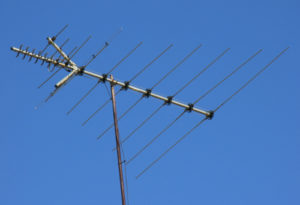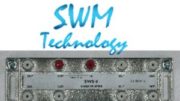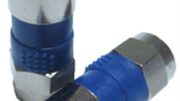This series explores those basic tools and accessories that are so critical to DIY home theater. Take a journey with Jake Buckler as he learns about these commonly used items.

Yes, I have learned that cord-cutting can be a great experience when you know a few TV antenna basics. Unfortunately, some unscrupulous antenna makers use false and misleading advertising. You typically see this with those bargain basement antennas you find at some retail and internet outlets. The marketing claims these companies make often give people the wrong idea about what a TV antenna can and cannot do. This leads to the frustration and disappointment that comes from unmet expectations. Since I’ve finally learned some things about antennas, I’m happy to pass it on to anyone who wants to cut the cord.
It was a conversation with Jason Vanover, a Solid Signal tech, that opened my eyes to all of this. Each day, he spends time on the phone with people who are disappointed with the antenna they got from their local retail store. In most of these cases, Jason says the person on the other end of the line is disappointed with the TV antenna they got elsewhere. Here are the three biggest complaints that people have with their retail-store TV antennas:
1. “My Antenna Doesn’t Get a Lot of Channels!”
It doesn’t take Jason too long to get to the root of the problem. He explained, “When some says this, the first thing I ask is what is the range on the antenna. They’ll tell something crazy like 150 miles or something like that.” One thing I know is that there’s no such thing as a 150-mile antenna. There’s no such thing as an 101-mile antenna for that matter.
Jason deals with a lot of disgruntled cord-cutters who were duped by the false advertising of some less-then-reputable companies. This often puts him in the awkward position of being the bearer of bad news. “I explain that TV antennas don’t have that kind of range,” Jason said. “Then I get their zip code to find out how far they live from their local TV transmitters.” In nearly every case, Jason says that his customers’ needs are met by antennas with a more realistic ranges such as 40-60 miles.
Jason described the basics of what he and every Solid Signal tech does for cord-cutters. It’s all about matching each customer with the best antenna for their particular installation. That’s why we carry more than 100 antennas in our online inventory. Our techs consider distance, terrain, and other factors to give you the best TV antenna recommendation. No other online electronics retailer puts this much time and consideration into their antenna recommendations.
2. “Why Can’t I Get VHF Channels?”
Veteran cord-cutters and experts such as Stuart Sweet understand the difference between UHF and VHF. To the average person, however, these things might sound like overly-technical scientific jargon. This leads to a lot of misunderstandings about TV antennas, Jason says. “Some people automatically think that if a UHF antenna gets UHF at 70 miles, it will also get VHF from that distance,” he added. “In reality, that particular model might receive VHF up to 20-25 miles.”
Remember those “150-miles antennas we talked about earlier? Yeah, those are usually the ones that don’t deliver on their promises, especially with VHF. “There’s no antenna that can pull UHF from that far away, let alone VHF,” Jason commented. “When new cord-cutters call us, we explain all of this to them.” VHF channels are those channels number 2-13, while UHF channels are numbered 14-51. This isn’t the only difference between these two television broadcasting frequencies.
UHF channels are broadcast on much higher frequencies than VHF. This is why UHF broadcasting can be received with much smaller antennas than VHF. Knowing this, Solid Signal is able to recommend an antenna and equipment to get most or all of the free UHF and VHF channels and sub-channels in your market. Jason added, “While every installation is different, we have the solution to make your cord-cutting experience the best it can be!”
3. “Which End of the Antenna Do I Aim?”
Yes, some people do ask our techs about this and Solid Signal doesn’t judge them for it. We live and breathe TV antennas, but we know that the average person doesn’t. That’s why we’re happy to answer this and any other question people have. As to aiming a TV antenna, it’s actually very easy. Jason explained, “In some cases, the tip or smallest point, is what they need to aim toward the transmitters. All of our antennas come with instructions, but we’re always just a phone call away if anyone has a question about aiming their antennas.”
Ready to Cut the Cord?
Millions of people across the country are saving money by swapping their cable box with an antenna. You can, too. Just stay away from the “latest and greatest” TV antenna from the appliance section at your local retailer. Hopefully this post helped clear up some misconceptions you might have had about TV antennas. To put it simply, if you want to cut the cord, you can trust Solid Signal to match you with the right TV antenna and equipment. This gives you the best cord-cutting experience. To get started, or if you have any other questions, give us a call at 888-233-7563.





